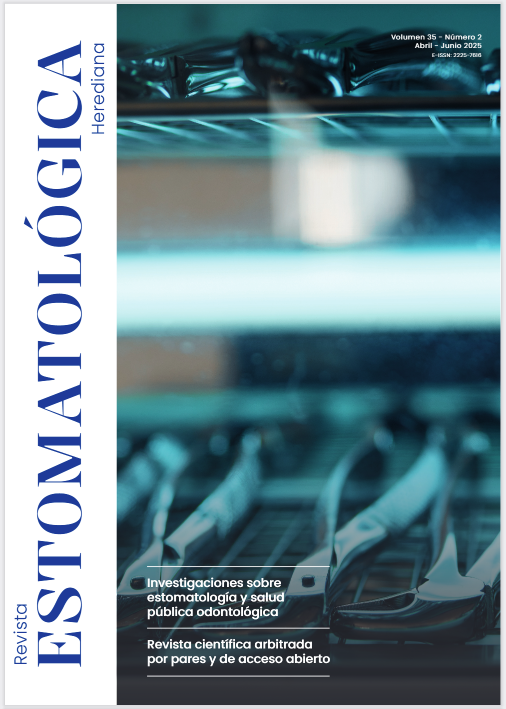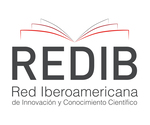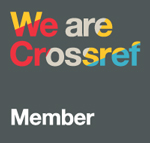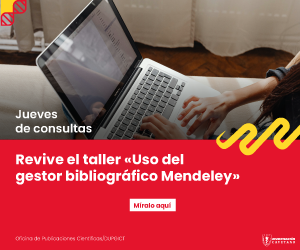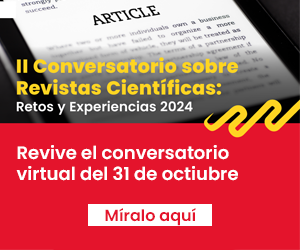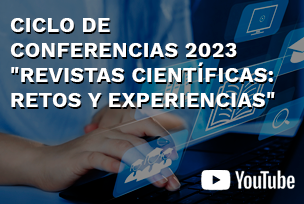Oral hygiene habits, perceived barriers, and burden reported by caregivers of children and adolescents with disabilities
DOI:
https://doi.org/10.20453/reh.v35i2.5513Keywords:
oral hygiene, dental care for people with disabilities, caregiver burden, caregiversAbstract
Objetive: To determine oral hygiene habits, barriers, and burden reported by caregivers of children and adolescents with disabilities (CAD) in Talca, Chile. Materials and methods: A cross-sectional study was applied to caregivers of this vulnerable population. Children and adolescents were characterized using sociodemographic variables, diagnosis, and a degree of functional dependence, and their caregivers were characterized based on sociodemographic variables. Oral hygiene habits of CAD were determined along with the barriers faced by caregivers when maintaining oral hygiene on CAD and the burden reported by caregivers. Results: Out of 62 caregivers, 93.5% reported that CAD performed oral hygiene practices, either with or without assistance or supervision from the caregiver. Additionally, 91.4% used a manual toothbrush; 94.8% used toothpaste; 84.4% did not use dental floss; 84.5% did not use mouthwash; 50.0% brushed twice a day; and 75.7% of caregivers assisted CAD with their oral hygiene practices. Regarding barriers, 60.0% found it difficult to access all the areas of the CAD's mouth, and 49.1% identified anxiety in the child as a challenge during oral hygiene. Finally, 53.2% of caregivers experienced severe overload. Conclusions: Most caregivers reported that CAD engaged in oral hygiene practices and received assistance. They even reported that they faced barriers to performing children's oral hygiene and that they were severely overloaded.
Downloads
References
Fondo de Naciones Unidas para la Infancia. Reconocidos, contabilizados, incluidos. Utilizar los datos para arrojar luz sobre el bienestar de los niños y las niñas con discapacidad. Resumen [Internet]. Unicef; [s. f.]. Disponible en: https://www.unicef.org/nicaragua/media/8016/file/Reconocidos,%20contabilizados,%20incluidos.pdf
Ministerio de Desarrollo Social y Familia, Servicio Nacional de la Discapacidad (CL). III Estudio Nacional de la Discapacidad 2022 [Internet]. Santiago de Chile: MDSF; 2023. Disponible en: https://www.senadis.gob.cl/pag/693/2004/iii_estudio_nacional_de_la_discapacidad
Ley n.° 20.422, que Establece normas sobre igualdad de oportunidades e inclusión social de personas con discapacidad [Internet]. Santiago de Chile: Ministerio de Planificación; 2010, 3 de febrero. Disponible en: https://www.bcn.cl/leychile/navegar?idLey=20422
Islas NL, Ramos B, Aguilar MG, García ML. Perfil psicosocial del cuidador primario informal del paciente con EPOC. Rev Inst Nal Enf Resp Mex [Internet]. 2006; 19(4): 266-271. Disponible en: https://www.scielo.org.mx/pdf/iner/v19n4/v19n4a6.pdf
Swartz K, Collins LG. Caregiver care. Am Fam Physician [Internet]. 2019; 99(11): 699-706. Disponible en: https://www.aafp.org/pubs/afp/issues/2019/0601/p699.html
Barros AL, Gutierrez GM, Barros AO, Santos MT. Quality of life and burden of caregivers of children and adolescents with disabilities. Spec Care Dentist [Internet]. 2019; 39(4): 380-388. Disponible en: https://doi.org/10.1111/scd.12400
Bizarra MF, Ribeiro Graça S. Short-term impact of an oral health program for adults with cerebral palsy. Spec Care Dentist [Internet]. 2020; 40(1): 26-34. Disponible en: https://doi.org/10.1111/scd.12431
Philip P, Prasanna P, Vijaya Remi R, Samuel R, George WT, Joseph MS, et al. Prevalence of dental caries among children and adolescents with intellectual disability in India: a scoping review. J Appl Res Intellect Disabil [Internet]. 2024; 37(5): e13278. Disponible en: https://doi.org/10.1111/jar.13278
Silva EL, Góes PS, Vasconcelos MM, Jamelli SR, Eickmann SH, Melo MM, et al. Oral health care for children and adolescents with cerebral palsy: perceptions of parents and caregivers. Ciênc Saúde Coletiva [Internet]. 2020; 25(10): 3773-3784. Disponible en: https://doi.org/10.1590/1413-812320202510.27972018
Rizal RV, Suharsini M, Budiardjo SB, Sutadi H, Indiarti IS, Rizal MF, et al. Evaluation of oral hygiene in children with down syndrome using the busy book ayo sikat gigi as an educational toy. Pesqui Bras Odontopediatria Clín Integr [Internet]. 2019; 19: e5101. Disponible en: https://www.scielo.br/j/pboci/a/dL7dmsY9b6rKN6MtBmbG9hC/?lang=en
Zhou N, Wong HM, McGrath C. Oral health and associated factors among preschool children with special healthcare needs. Oral Dis [Internet]. 2019; 25(4): 1221-1228. Disponible en: https://doi.org/10.1111/odi.13057
Barrero CL, García S, Ojeda A. Índice de Barthel (IB): Un instrumento esencial para la evaluación funcional y la rehabilitación. Plast Rest Neurol [Internet]. 2005; 4(1-2): 81-85. Disponible en: https://www.medigraphic.com/pdfs/plasticidad/prn-2005/prn051_2l.pdf
Breinbauer H, Vásquez H, Mayanz S, Guerra C, Millán T. Validación en Chile de la Escala de Sobrecarga del Cuidador de Zarit en sus versiones original y abreviada. Rev Med Chil [Internet]. 2009; 137(5): 657-665. Disponible en: http://dx.doi.org/10.4067/S0034-98872009000500009
Stensson M, Norderyd J, Van Riper M, Marks L, Bjork M. Parents' perceptions of oral health, general health and dental health care for children with Down syndrome in Sweden. Acta Odontol Scand [Internet]. 2021; 79(4): 248-255. Disponible en: https://doi.org/10.1080/00016357.2020.1824015
Floríndez LI, Como DH, Floríndez DC, Floríndez FM, Law E, Polido JC, et al. Toothbrushing and oral care activities of autistic and non-autistic latino children. Children (Basel) [Internet]. 2022; 9(5): 741. Disponible en: https://doi.org/10.3390/children9050741
Sosiawan A, Wahjuningrum DA, Setyowati D, Suhartono M, Audrey NW, Mawantari TP, et al. The relationship between parents' oral hygiene knowledge and children with Down Syndrome's oral hygiene via OHI-S. F1000Res [Internet]. 2022; 11: 374. Disponible en: https://doi.org/10.12688/f1000research.87848.2
Arias C, Muñoz-Quezada MT. Calidad de vida y sobrecarga en cuidadores de escolares con discapacidad intelectual. Interdisciplinaria [Internet]. 2019; 36(1): 257-272. Disponible en: https://www.scielo.org.ar/scielo.php?script=sci_abstract&pid=S1668-70272019000100017
Montero X, Jurado S, Valencia A, Méndez J, Mora I. Escala de carga del cuidador de Zarit: evidencia de validez en México. Psicooncología [Internet]. 2014; 11(1): 71-85. Disponible en: https://doi.org/10.5209/rev_PSIC.2014.v11.n1.44918
Qiao Y, Shi H, Wang H, Wang M, Chen F. Oral health status of Chinese children with autism spectrum disorders. Front Psychiatry [Internet]. 2020; 11: 398. Disponible en: https://doi.org/10.3389/fpsyt.2020.00398
Asencios-Ortiz RP, Pereyra-Zaldívar H. Carga de trabajo del cuidador según el nivel de funcionalidad de la persona con discapacidad en un distrito de Lima. An Fac Med [Internet]. 2019; 80(4): 451-456. Disponible en: http://dx.doi.org/10.15381/anales.v80i4.16441
Chu CH, Lo EC. Oral health status of Chinese teenagers with cerebral palsy. Community Dent Health [Internet]. 2010; 27(4): 222-226. Disponible en: https://web.archive.org/web/20241005181610/https://www.cdhjournal.org/issues/27-4-december-2010/290-oral-health-status-of-chinese-teenagers-with-cerebral-palsy
Du RY, Yiu CK, King NM. Oral health behaviours of preschool children with autism spectrum disorders and their barriers to dental care. J Autism Dev Disord [Internet]. 2019; 49(2): 453-459. Disponible em: https://doi.org/10.1007/s10803-018-3708-5
Carvalho RB, Mendes RF, Prado RR, Moita JM. Oral health and oral motor function in children with cerebral palsy. Spec Care Dentist [Internet]. 2011; 31(2): 58-62. Disponible en: https://doi.org/10.1111/j.1754-4505.2011.00180.x
Deshpande AN, Naik K, Deshpande N, Joshi N, Jaiswal V, Raol RY. Safety and efficacy of plaque removal using manual and powered toothbrush in cerebral palsy children by parents/caregivers: a randomized control crossover trial. Int J Clin Pediatr Dent [Internet]. 2023; 16(2): 344-349. Disponible en: https://doi.org/10.5005/jp-journals-10005-2533
Moraes RB, Marques BB, Cocco DM, Knorst JK, Tomazoni F, Ardenghi TM. Effect of environmental and socioeconomic factors on the use of dental floss among children: a hierarchical approach. Braz Oral Res [Internet]. 2019; 33: e096. Disponible en: https://doi.org/10.1590/1807-3107bor-2019.vol33.0096
Quadri MF, Shubayr MA, Hattan AH, Wafi SA, Jafer AH. Oral hygiene practices among Saudi Arabian children and its relation to their dental caries status. Int J Dent [Internet]. 2018; 2018(1): 3234970. Disponible en: https://doi.org/10.1155/2018/3234970
Goodarzi A, Heidarnia A, Tavafian SS, Eslami M. Predicting oral health behaviors among Iranian students by using health belief model. J Educ Health Promot [Internet]. 2019; 8(1): 10. Disponible en: https://doi.org/10.4103/jehp.jehp_10_18
AlHumaid J, Gaffar B, AlYousef Y, Alshuraim F, Alhareky M, El Tantawi M. Oral health of children with autism: the influence of parental attitudes and willingness in providing care. Sci World J [Internet]. 2020; 2020(1): 8329426. Disponible en: https://doi.org/10.1155/2020/8329426
Subasi F, Mumcu G, Koksal L, Cimilli H, Bitlis D. Factors affecting oral health habits among children with cerebral palsy: pilot study. Pediatr Int [Internet]. 2007; 49(6): 853-857. Disponible en: https://doi.org/10.1111/j.1442-200x.2007.02445.x
Constance D, Subbiah R, Sukumaran A, Madankumar P. Barriers in maintaining oral health among the children with cerebral palsy – Parent/caregiver’s perspective. J Indian Soc Pedod Prev Dent [Internet]. 2023; 41(3): 234-238. Disponible en: https://doi.org/10.4103/jisppd.jisppd_360_23
George SS, Elenjickal MG, Naik S, Thomas NG, Vellappally S, Varghese N, et al. Oral health status and dental treatment needs in children with autism spectrum disorder. Heliyon [Internet]. 2024; 10(18): e37728. Disponible en: https://doi.org/10.1016/j.heliyon.2024.e37728
Malta CP, Guerreiro GG, Dornelles NM, Marques CT, Martins JS, Westphalen Bento L. Caregivers' perceptions regarding oral health status of children and adolescents with cerebral palsy. J Clin Pediatr Dent [Internet]. 2020; 44(3): 161-167. Disponible en: https://www.jocpd.com/articles/10.17796/1053-4625-44.3.5
Kayadjanian N, Schwartz L, Farrar E, Comtois KA, Strong TV. High levels of caregiver burden in Prader-Willi syndrome. PLoS ONE [Internet]. 2018; 13(3): e0194655. Disponible en: https://doi.org/10.1371/journal.pone.0194655
Downloads
Published
How to Cite
Issue
Section
License
Copyright (c) 2025 Carla Andrea Orellana Herrera, Lorena Mirtala Orellana Salazar, Luis Humberto Luengo Machuca

This work is licensed under a Creative Commons Attribution 4.0 International License.
The authors retain the copyright and cede to the journal the right of first publication, with the work registered with the Creative Commons License, which allows third parties to use what is published as long as they mention the authorship of the work, and to the first publication in this journal.
